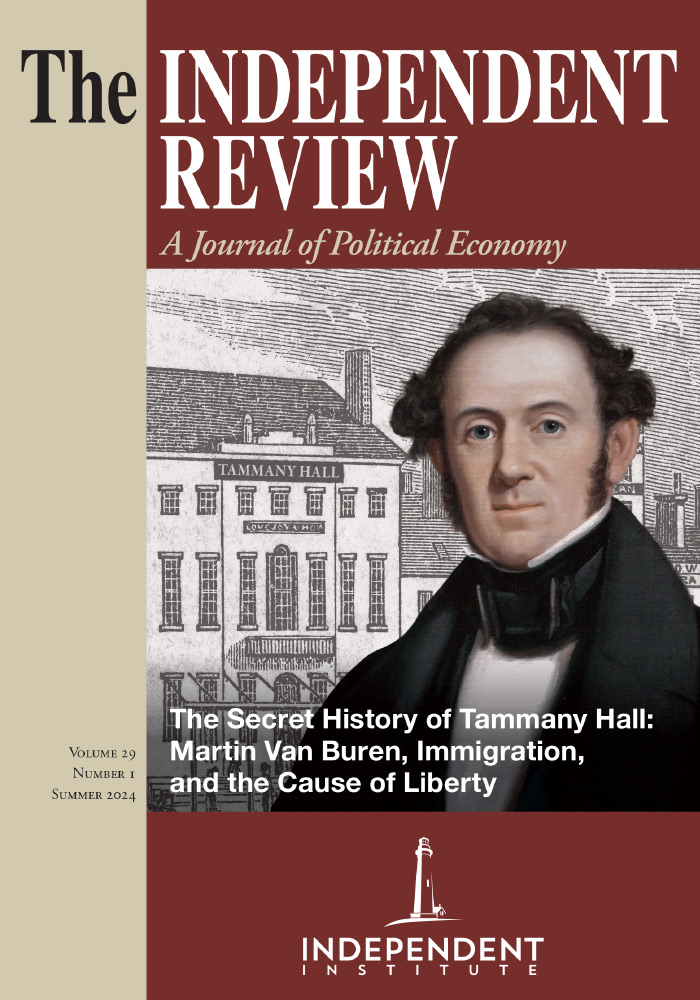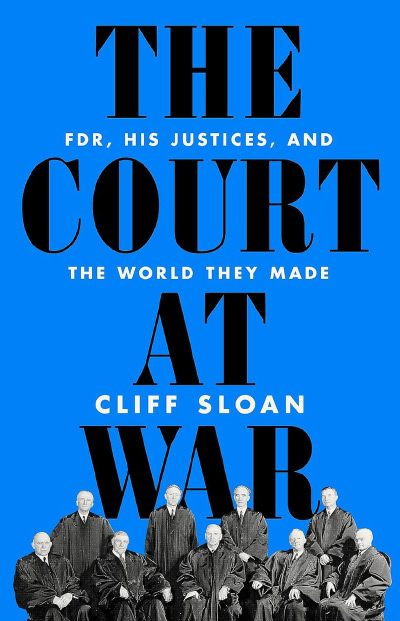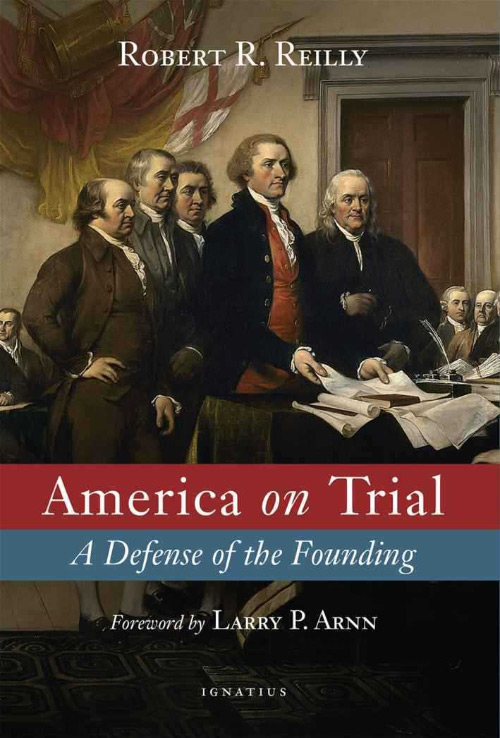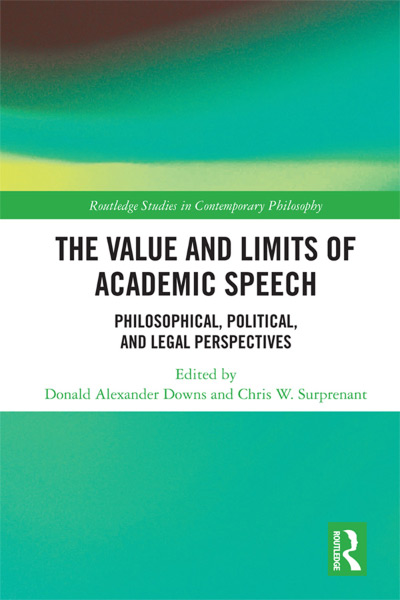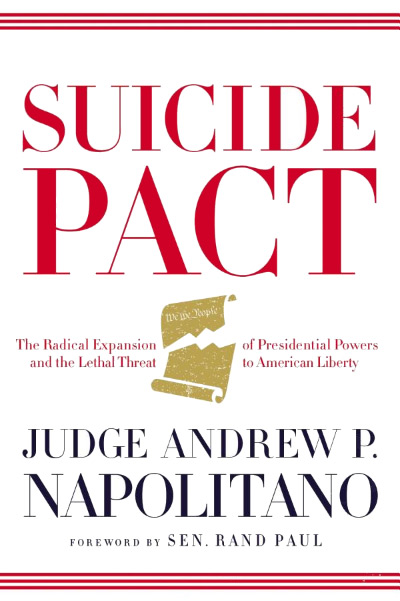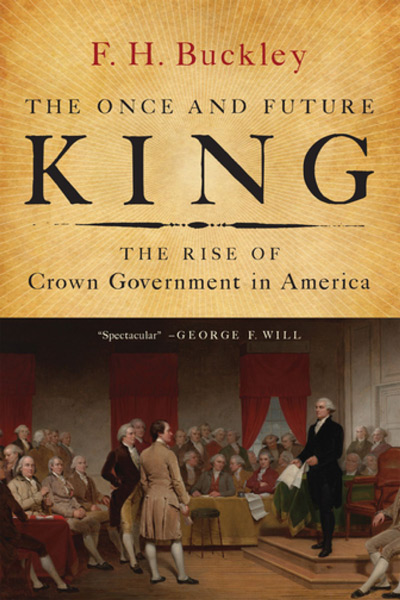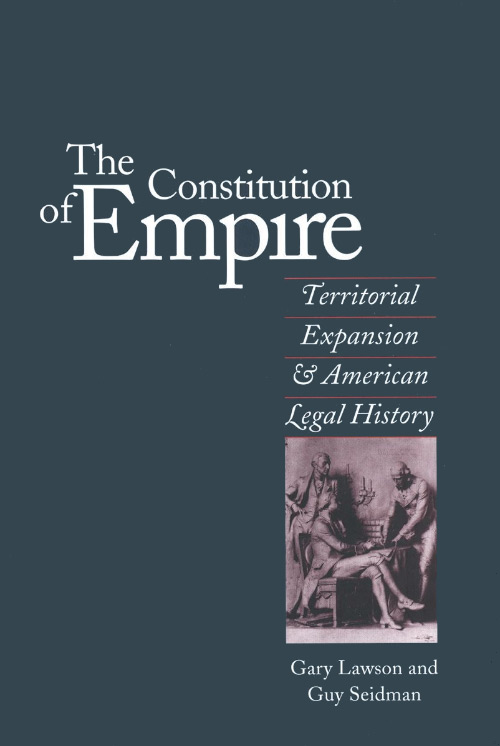In Ex Parte Milligan, 71 U.S., 2, 120–121 (1866), the Supreme Court boldly declared: “The Constitution of the United States is a Law for rulers and people equally in war and in peace, and covers with the shield of its protection all classes of men, at all times, and under all circumstances.” This principle has been challenged at points in U.S. history and was certainly sorely tested during World War II. In fact, the work of the Supreme Court during that conflict was largely overshadowed by foreign events. In this readable volume Cliff Sloan examines the court’s leading decisions of the war years. Although generally sympathetic to the work of the justices, he stresses that there were substantial failings. The court’s war legacy, the author concludes, “included some of the best and worst decisions since the founding of the republic” (p. 348).
Sloan awards the court high marks for its rulings against compulsory flag salutes in classrooms, striking down a forced sterilization law targeting habitual felons, and invalidating the all-white Democratic Party primary elections. He pictures these decisions as opening the door for subsequent advances in civil rights and individual liberties. On the other hand, Sloan is rightly censorious of the court’s handling of the German saboteurs’ trial before a military commission and the outrageous Japanese American relocation cases.
Sloan does a fine job of sketching the personalities of the wartime justices and the close relationship of many with President Roosevelt. The author points out that all but Owen Roberts owed their appointment to the president, and many simply adored him. The line between legislative and executive functions was often blurred as justices helped to draft legislation and gave legal advice to the president. For his part, Roosevelt commented to various justices about pending cases and even privately threatened to disregard an adverse decision. “FDR,” Sloan concludes, “continued to view the Justices as members of his official family, trusted friends and allies” (p. 259). This personal and political tie between most justices and the president explains why a court supposedly committed to individual rights was unwilling to confront him on any matter of importance to the president. To the author this record presents “a cautionary tale about the problems of Justices being too close to the President who appointed them” (p. 348).
Aside from excessive deference to Roosevelt, Sloan points out that the wartime court was known for the extraordinary level of animosity among the justices. There was a sharp increase in 5-4 decisions, and dissenting opinions were increasingly framed in personal terms. Sloan treats in detail how the justices, virtually all of whom were supporters of the New Deal economic program, fragmented so badly. Part of this problem he blames on Chief Justice Harlan Fiske Stone. Sloan pictures Stone as an “exceptionally weak” leader (p. 74) who lacked the diplomatic skill to marshal the court and build consensus. In fairness, that was no easy task. Felix Frankfurter, the famous Harvard professor, saw himself as the intellectual leader of the court and tirelessly lobbied his colleagues. But when other justices, equally strong willed, resisted Frankfurter, he reacted with bitterness and mockery. Frankfurter even termed those justices who opposed his views as “the Axis” (p. 75). There were also serious jurisprudential differences among the justices. One faction, headed by Hugo Black and William O. Douglas, favored a broad role for the court in defending certain constitutional rights. Another faction, led by Frankfurter and Robert Jackson, saw a more restricted place for the court in a democratic society. This divergence between judicial activism and deference, which frequently seems to depend on what issue is before the court, is not easily resolved and is debated to the present. In an act of stunning pettiness, furthermore, the justices could not even agree on a routine letter of appreciation when Roberts retired from the court in 1945.
The court majority during World War II demonstrated no interest in the rights of property owners, readily deferring to the exercise of vast congressional authority over the economy. In his most disappointing chapter, Sloan is sympathetic to this development and, in contrast to other sections of his book, asks no hard questions. He sets the stage by decrying the “the previous conservative Supreme Court’s regular striking down of economic legislation” (p. 67). This picture is certainly overdrawn. In fact, most economic regulations were sustained. Sloan also sees no problem in placing broad power in the hands of unelected administrative agencies. Other commentators sharply disagree. (See, e.g., Philip Hamburger, 2017–18, “The Administrative Threat to Civil Liberties,” Cato Supreme Court Review: 15–27, maintaining that administrative governance removes issues from the democratic process and violates constitutional freedoms.)
In 1942 Congress enacted sweeping and unprecedented legislation conferring vast authority over the economy on the executive branch. It created the Office of Price Administration, empowered to fix maximum prices for commodities according to vague guidelines. By any measure the legislation was a massive delegation of lawmaking authority to the OPA. It also placed procedural barriers in the path of aggrieved parties seeking to obtain judicial review of price orders, thereby discouraging such appeals. Given its record of deference to Roosevelt administration initiatives and its disinterest in property rights and limited government, it was hardly surprising that the war court upheld this legislation in the face of serious constitutional objections. Stone’s perfunctory opinion in Yakus v. United States, 321 U.S. 414 (1944), stressed the power of Congress to set prices during war and held that the standards in statute were sufficiently definite to limit administrative decisions. Roberts would have none of it. In a blistering solo dissent, he maintained that the supposed standards were so open-ended that in reality they imposed no limits on the OPA and thus unconstitutionally delegated legislative authority to executive officials. Rejecting a war power justification, Roberts forcefully insisted that Congress could not suspend constitutional provisions during war.
Similarly, Congress inaugurated a novel scheme of federal rent control in areas to be determined by the OPA. The court majority in Bowles, Price Administrator v. Willingham, 321 U.S. 503 (1944), readily sustained broad governmental power over the rights of individual property owners. Douglas, speaking for the court, relied on Yakus and rejected the argument that the act amounted to an unconstitutional delegation of congressional authority. Nor was he impressed that the defendant landlord did not receive an individual determination of a fair return on her rental property. In an angry dissent, Roberts insisted that the imprecise standards set forth in the act were illusory. He concluded that “it is plain that this Act creates personal government by a petty tyrant instead of a government by law” (321 U.S. at 537). Sloan applauds these decisions, which endorsed abject deference to a congressional assignment of its lawmaking function to agencies so long as there was a fig leaf of supposed guidelines. Indeed, he laments that this cornerstone of the administrative state is now under assault.
Moreover, some of the decisions celebrated by Sloan may not have powerful legs. Consider the celebrated decision in West Virginia State Board of Education v. Barnette, 319 U.S. 624 (1943), in which the war court ruled that Jehovah’s Witnesses children could not be compelled to espouse a belief they did not share by saluting the flag. This blow against compelled speech has been diluted as courts adopt balancing tests to decide when state interests might justify infringement on the First Amendment right not to speak. Consequently, compelled speech abounds in contemporary American society. For example, courts have often accepted indirect forms of compelled speech, such as the financial contributions that individuals are required to make to unions or professional organizations to subsidize speech that individuals oppose. Today many public colleges mandate what amounts to a political test for employees and applicants, a form of compelled speech seemingly at odds with Barnette. In short, there is room to doubt that Barnette “is one of the most profound constitutional rights decisions ever issued,” or that it has proved to be “a powerful and illuminating guidepost” (p. 350).
Sloan concludes by using the record of the war court as a platform to criticize the current Supreme Court. Such presentism is misplaced in this volume. He asserts that today a justice’s party affiliation correlates to decisions “more than at any time in our history” (p. 349). This is a bizarre comment in a study of a court composed almost entirely of New Deal Democrats who acted as cheerleaders for the Roosevelt economic program. Sloan also complains that the current court has adopted “novel, far-reaching restrictions” (p. 351) on congressional power. It would be more accurate to suggest that the present court has simply rediscovered that the Constitution does not confer unlimited authority on Congress, much less on unelected administrators. Viewing American constitutional history over time, perhaps it was the war court that was aberrational.
Despite these caveats, readers can learn much about the frequently obscured work of the Supreme Court during World War II from this helpful volume.
| Other Independent Review articles by James W. Ely, Jr. | ||
| Fall 2022 | New Democracy: The Creation of the Modern American State | |
| Spring 2015 | The Classical Liberal Constitution: The Uncertain Quest for Limited Government | |
| Summer 2013 | Buying America from the Indians: Johnson v. McIntosh and the History of Native Land Rights | |
| [View All (12)] | ||

